Resources
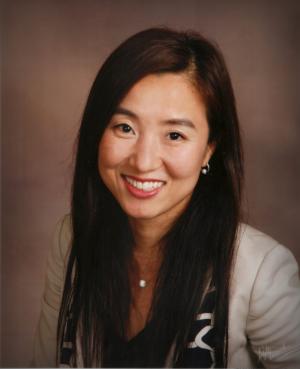
A traumatic event is one that is sudden and unexpected. Is Covid-19 a traumatic event? Jonathan Porteus, Ph.D., a licensed clinical psychologist who oversees a crisis and suicide hotline in Sacramento, CA., points out high levels of emotional distress from the Covid-19 crisis, and recommends attending to this mental health crisis as a traumatic event. Porteus comments, “Our society is definitely in a collective state of trauma.”[1] The Covid-19 pandemic may also lead to an upcoming wave of mental disorders claims Sandro Galea in an April essay published in the Journal of the American Medical Association.[2] Online learners may be experiencing traumatic emotional distress which may have an impact on their academic performance in their online classes. Then, how can educators in the online teaching of theology and religious studies offer trauma-informed care for online learners? And what should they avoid? What to do: The educator will likely observe changes to an online learner’s behavior and academic performance if mental health challenges arise from traumatic events. In the face-to-face classroom, the educator is, presumably, more easily able to perceive mental health warning signs such as mood changes, change of appearance, absences, and unusual behaviors. In an online class, it is more difficult to assess warning signs of mental health distress. Thus, online educators need to develop strategies for identifying mental health challenges in order to provide appropriate trauma-informed online learning. Trauma often impacts the psychological mechanisms which regulate emotions. If there is a sudden change in academic performance, disruptive interaction in the online discussion, disrespectful behavior toward peers and faculty, or failing grades, an educator should reach out and check on a student’s emotional state. It is critical for educators working from a perspective of trauma-informed online learning to know the warning signs of mental health challenges. Bonny Barr offers these guidelines for identifying the warning signs of mental illness or emotional distress in online students.[3] ATYPICAL BEHAVIORS (a change from the usual) UNUSUAL BEHAVIORS ACADEMIC PERFORMANCE PROBLEMS (Sharkin, 2006) Becoming irritable/short-tempered/obsessive Emails are accusatory, manipulative, sexually inappropriate or threatening Late assignments from beginning of course Sudden deterioration in quality of work Discussion post contents are: bizarre, fantastical, paranoid, disruptive, confused, or show disorientation Failing quality of work from beginning of course Abruptly begins turning in late assignments Student clearly seems out of touch with reality Not returning emails or phone calls Becoming disrespectful in discussion posts Not turning in work at all Stops responding to email Not re-doing work when given an opportunity Content of work becomes negative/dark/odd in tone Ongoing display of anxiety about assignments Trauma-informed care in online-learning is to acknowledge the earlier signs of traumatic experiences. It means that it is valuable to contact online learners when they display atypical behaviors. As Bruce Sharkin states, “Early intervention can help reduce the chance of a student’s problems turning into a crisis situation later on.”[4] An online educator should be encouraged to address a mental health concern in the early stages of a sudden change of behaviors and identify the emotional distress caused by stress. What not to do: Trauma-informed online learning begins to create a safe space in the learning interaction. When an educator reaches out to learners by any vritual communication, it is critical not to be judgmental. Remember you are not there to give a diagnosis or ‘solve’ mental health challenges. Your first contact is to initiate safe conversations with acceptance and encouragement. For example, an educator can say, or write an email, “I’m touching base with you because I noticed you hadn’t submitted anything for several weeks. It seems as if you are having a rough time,” or “In the discussion post, I see you are stressed out.” An educator’s concern and empathy can be expressed by virtual communications. This approach will encourage a learner to share their struggles without having defensive responses and confrontations. An education in trauma-informed online learning can be the first responder for students. Also, a trauma-informed educator needs to equip themselves to have counseling resources available to students and to know the institutional policies for students with mental health challenges. If anything in the initial conversation leads the educator to be alarmed or have increased concern about the mental health of the learner, then the academic support process can be initiated. Trauma-informed educators in online learning occupy a unique position to help learners be aware of their mental health struggles and seek helpful resources for their well-being. Further, trauma-informed educators in the online teaching of theology and religious studies are in a unique position to influence religious communities by caring for the online learner. When online educators equip themselves to address the mental health challenges of learners, the online educator becomes a great support system for responding to the psychological needs and wellness, not only for online learners, but also for religious communities during the Covid-19 pandemic. [1] Katherine Kam, “Mental Health an Emerging Crisis of COVID Pandemic,” https://www.webmd.com/lung/news/20200508/mental-health-emerging-crisis-of-Covid-pandemic?ecd=wnl_spr_051120&ctr=wnl-spr-051120_nsl-LeadModule_title&mb=210I6N5H5gRJeKEyXlsPHQPCAlmlkpgV9%40IzB8Po%2fgY%3d, May 8, 2020, (Accessed May 12, 2020). [2]Sandro Galea, et.at., “The Mental Health Consequences of COVID-19 and Physical Distancing: The Need for Prevention and Early Intervention,” Journal of the American Medical Association, Published online April 10, 2020. (Accessed May 12, 2020), doi:10.1001/jamainternmed.2020.1562. [3] Bonny Barr, “Identifying and Addressing the Mental Health Needs of Online Students in Higher Education,” Online Journal of Distance Learning Administration, Volume XVII, Number II, Summer 2014 University of West Georgia, Distance Education Center, (Accessed May 12, 2020) https://www.westga.edu/~distance/ojdla/summer172/barr172.html [4] Bruce S. Sharkin, College Students in Distress: A Resource Guide for Faculty, Staff, and Campus Community (Taylor & Francis, 2013), 52.

[embedyt] https://www.youtube.com/watch?v=LvIfdwQV5dY[/embedyt] Hi friends. As I and others have reflected on in recent posts, our students have been experiencing not simply the typical challenges of online education, under the best of conditions: difficulty with time management, lack of motivation, glitchy or unavailable or prohibitively expensive technology; they’re also experiencing a lack of connection. My students liked being in class: they enjoyed sharing space with each other; they wanted the chance to interact with me. And it wasn’t just them; I really missed the in-person experience too. Today, I want to offer the concept of “self-disclosure” up for consideration, as one frame for thinking about closing such connection gaps, which have only been exacerbated by these times of distancing and isolation. There are lots of different definitions of this term, “self disclosure”; I personally like the one I found on YouTube from a Communication Studies instructor who said that “self-disclosure is the process of deliberately revealing significant information about oneself that would not be normally known by others.” To repeat, “self-disclosure is the process of deliberately revealing significant information about oneself that would not be normally known by others.” There are, I admit, risks to this kind of self-disclosure in the educational context, for instance, a loss of credibility in the eyes of some students, depending on the significant information shared; apparently, studies have shown that students don’t exactly appreciate hearing about their instructors’ drinking habits! Who would have guessed? But research has also found a lot of benefits too. Self-disclosure can signal the values of openness and humility, it can foster interest and motivation, it can increase the activity in a class, and it can even improve final course evaluations. But, for our current context, I want to focus on another one of its many benefits: that self-disclosure can humanize everyone involved in the learning process and can therefore help to create connections—connections that have been so compromised by the coronavirus. We can, as Rick Moody recently wrote in The New Yorker, “try to cause the humanness to shine through the ones and zeroes.” This revealing of information, on the parts of faculty and students alike, has already been occurring in various ways in our courses, even at the most “normal” of times, from what the syllabus communicates about us as instructors (i.e., our values, our personality, our pedagogy) to what we (think we) learn about individual students through disability accommodation requests that we may receive. In the past, I’ve certainly shared a variety of significant information about myself that my students would not have otherwise known: the time I took a trip, on my own, to India, between my junior and senior year of college; my positive experience with the meditation app Headspace; my great love, borderline obsession, with extra toasty Cheez-its (and yes, this does count as significant piece of information about me). It’s happening now too, online, when cats or kids pop up onto screens; when I wear my Colgate sweatshirt to teach synchronous sessions on Zoom rather than normal work attire; when students mention how bored and out of sorts they are. But such self-disclosure has always seemed a bit impulsive or haphazard. In these times of crisis, I’m suggesting we try to be more intentional about it. The literature on self-disclosure offers various recommendations for how to be effective, some of which seem beside the point to me right now, for instance, making sure to relate it to your course content or trying to vary the topics and timing. The recommendations I’m gravitating toward the most, right now, are the ones that say: be honest, be authentic, be vulnerable. If you’re struggling, let students know. If you’re worried, tell them. If you’re tired or stressed or overwhelmed or uncertain, don’t feel like you have to keep it to yourself under the guise and pressures of professionalism. We all know those standards are biased anyway. Be real. This can let students know they’re not alone. It can model how to handle ambiguity or difficulty. It can create connections, between actual human beings, which is precisely what we all need right now. Thank you.
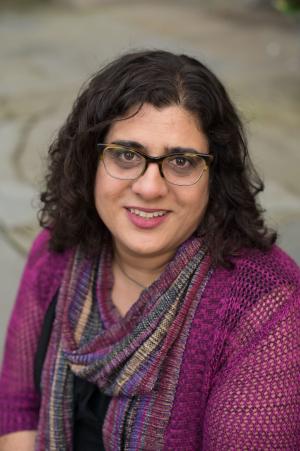
The day before we were told to go online, rumors that we would transition were flying think and fast. It was a Tuesday. I was supposed to head to Vanderbilt that evening to give a talk on Wednesday, but the night before, it had been canceled. Given this, I suspected that we (CU Boulder) would be going online soon. Earlier in the day when I met with my seminar (a class that, despite being label a seminar, had over 30 people), I told them that I thought online was coming. The entire room burst into conversation, much of it unease, some of it amusement, most of it because they knew I was barely managing our minimalist Canvas site. We had already experienced some small adaptations together. A week or two before, a student who was experiencing back spasms asked if she could lie on the floor during the class. I said yes, and she participated while lying flat on her back. Prior to our last in-person session, a student had emailed me to say that he thought he had Covid-19 and asked if he could attend via FaceTime, on a classmate’s computer. I said yes, and he participated from his screen. Using that flexibility as our foundation, we spent 30 minutes planning our online transition together. In the end, I am responsible for the decisions that were made, but I am very glad that my students and I worked through the plans together. We discussed the possibility of meeting over Zoom. While people really liked our classroom community, we had concerns about trying to have a 34-person conversation over the computer. (At this time, I had never used Zoom and did not realize that I could break the class into small groups with the push of a button.) In addition to questions about the feasibility of the Zoom platform, students were anxious about internet access, changing work schedules, and responsibility for younger siblings. So, we decided that we would have discussion boards. I asked them if they thought that it would be fair to have everyone post one initial thought and two comments on existing posts per day. We agreed, as a group, that one comment could be part of an ongoing conversation on your own post, but that the other comment had to be on someone else’s. We discussed what they wanted and needed in order to make this plan work. Deadlines. They wanted clear deadlines and they wanted me to promise that I would not move things around on them. As the semester would wear on, one by one, they would repeatedly thank me for never moving anything around. We agreed that the initial post needed to be up by the start of class time, and that they had 25 hours to post responses. I talked about what I wanted in the discussion boards: for them to try not to repeat each other, and to make sure that someone commented on almost everyone’s post. When I brought up that second concern, one student nodded. I knew she would monitor our inclusivity. I was delighted, and feel that I can take very little credit, for what happened on our discussion boards over the following weeks. I posted questions to get them going; one of which was always, “Share a quote that struck you as interesting and tell us why you were intrigued by it.” They answered. They picked quotes they liked, they picked quotes that they did not understand, they picked quotes for which they needed more context. They brought their confusion to each other. Frequently, I would log in to discover that a question posed late at night, and probably aimed at me, had been answered by a student before I woke up. But maybe more impressive than their willingness to share their vulnerability, to share their “I do not knows,” they were willing, firmly and politely, to disagree with each other. They challenged each other repeatedly. They debated interpretations of texts, but they also called each other on more charged issues, like failures to see structural racism. Each time, I was struck by the fact that they did so without pointing fingers or descending into accusation. They remained firmly in intellectual community with each other. To be clear, some of these things had been happening in the classroom all along, but most were not, or at least included only the most talkative of the class. These discussion boards were very surprising to me, and upon reflection, I think this kind of connection occurred because I let them choose a format. I did not let them chose the format because I knew that it would lead to these conversations—I did it because I have never taught online, did not know what to do, and wanted to get buy-in for my plan. Wonderfully, my students responded by taking ownership of the space. They had been asked what they wanted to do, and with that freedom they went ahead and did it.
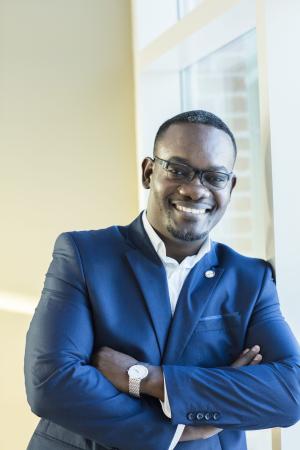
When teaching on issues of social justice, a faculty’s posture can foster or impede the students’ ability to learn and engage fully in the process. I teach Biblical Interpretation. One of the favorite courses that I have designed and taught is “Hermeneutics for Ministry”. This is a graduate course offered to students who are preparing for full time ministry. I challenge the students in the class not only to learn about the art of interpretation, but also to wrestle with why they interpret a certain way. For example, we talk about reading locations, biases and presuppositions. We discuss how a person’s cultural background affects/colors their reading lenses. We watch the movie Arrival and discuss the dynamics of language and prejudice, and the interplay between space/boundary maintenance and reconciliation. In other words, how we use our space and maintain boundaries, who we let in, and the willingness to enter another’s space affect our ability to engage the other in constructive ways. We examine what makes Dr. Louise Banks a character that is worth emulating. We read Emmanuel Levinas’ Otherwise than Being and discuss what it means for come face to face with the other, and to take on their plight. The final project for the course asks students to write a sermon series or develop curriculum that addresses issues on immigration or racial reconciliation; or design a pastoral care plan that addresses Teenage Suicide or Aging and Dying Well. I go to great length to challenge their assumptions and encourage them to think holistically about social justice; namely, to attend to the theological, spiritual, cultural, social, emotional, and financial aspect of the issue. The goal is not only their formation, but also the formation of their congregation’s hermeneutics (the way they view) and attitude (the way they behave) toward immigrants, members of a different race, the elderly, and the memory of those who commit suicide and toward their families. In the Fall 2016, I found myself struggling to communicate with the students. Many of the issues that were central to the course had taken center stage in the political rhetoric of the election. As a Haitian, and an immigrant, I wanted to be cautious. This posture created a lack of authenticity that hindered my ability to challenge the students. Our class met at 8:55am on Mondays, Wednesdays, and Fridays. The morning after the election, I went to class and started with prayers as was customary. No sooner had I said Amen, that one student asked, “What are your thoughts on last night’s election?” I replied immediately, “I am not from around here; I am not sure what to say.” I proceeded to start my presentation, when the silence that fell on the class caught my attention. I looked up from my computer and saw the students’ eyes fixed on me. It was a look that I had not seen before. They wanted to hear from me on this particular issue, and they were not willing to let me off the hook. I quickly realized that if I was going to be successful in my endeavor to challenge their own presuppositions on other social justice and civic engagement issues, I needed to be vulnerable on this one. To be vulnerable is to open oneself to the possibility of being wounded, of being harmed. It comes at a great risk. It is a risk worth taking if the telos of theological education is the transformation of the individual. We have to be willing to open up ourselves to the students, so that they can see our hearts and in order to be convinced of the lessons we want them to learn. That November morning, I took the risk and told the students what was on my heart. Among other things, I pointed out that the popular vote suggested that we were dealing with a divided country. I urged them to be ready to shoulder the responsibility and burden of bringing healing to a nation, a society, and a church that have lost the art of dialoging with others who hold diverging opinions. Little did I know that the divide would become so entrenched. Little did I know that their burden would become so heavy. Today more than ever we need to let our guard down and teach with vulnerability. We need to empower our students by acknowledging our own shortcomings. What would it take to invite them to our space and let them see our pain, our doubts, our struggles?
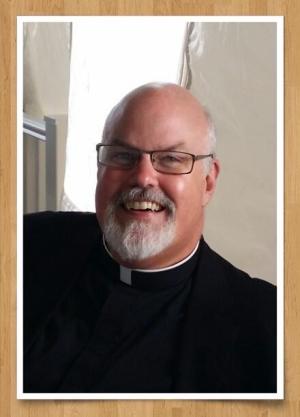
As the Covid-19 pandemic unfolded, I was wrestling with how to teach a rather unpopular class on “just war theory.” For so many of my students, who have lived through unending conflicts, the reasons to go into battle are unclear. A good number of them reject the distinction between justifiable and unjustifiable wars; for them, all wars are unjust. Many believe that political grandstanding and neo-colonial campaigns have been the cause of military interventions, and that peaceful negotiations could have resolved international conflicts. In the classroom, with its dynamic back-and-forth of questions and answers, discussion of just war theory was engaging. Tension could be thick at times, and the lack of any clear resolution problematic for some, but that is the energy of active learning! The pivot to online asynchronous teaching and learning has made engagement more of a challenge. Yet the pandemic provides a context on which to build a rich discussion of this ancient concept. The “War” Against the Coronavirus Political and health leaders throughout the world have used the metaphor of “war” to describe the global village’s fight against the novel coronavirus. It seemed appropriate then to ask students to consider how the criteria of just war theory illuminate the reality in which we find ourselves. Jus in Bellum The architects of the just war theory imagined that both sides would engage in reasonable behavior and proposed standards for activity in war. For its part, the virus does not abide by any standards. This reality, however, should not preclude us from acting justly. To get at this, students examined two jus in bellum criteria: “distinction” and “proportionality.” Distinction involves a clear focus on the enemy combatant. In this case, as students noted, all efforts should target the virus. The war on the novel coronavirus was not a time for playing politics among civic or religious leaders, or promoting personal or party agendas. Distinction obligates citizens to play their part and stay at home, wear protective personal equipment when necessary, and abide by social distancing rules. The principle of proportionality focuses on ensuring that combatants are respectful of the other side’s citizens and their property. No unwarranted destruction should accompany military action. Students observed that the virus violates this principle, but that should not preclude the human community’s commitment. Some questioned whether the economic shutdown, closing of nation-state borders, migration of schools to remote learning, and enforced lockdowns were evidence of a violation of this principle. These defensive measures have resulted in a rate of unemployment not seen since the Great Depression, disproportionate impact on vulnerable populations, particularly communities of color, the hoarding of an array of products, and increased incidences of mental health issues and domestic abuse, to name a few. I was struck that a handful of students also pointed to price gouging and rise in the number of scams associated with Covid-19. They saw these criminal actions as evidence of “internally” violating proportionality. Jus Post Bellum In their assessment of jus post bellum, students considered measures that would need to be implemented as we moved out of “shelter in place.” As I imagined, students’ responses were filled with frustration about how long they would have to be on lockdown in their homes. For graduating students, anxiety about their futures was palpable. According to jus post bellum, legitimate authorities must be the ones to set the conditions of peace. Students recognized the legitimate power of authority to safeguard its citizenry, but also realized the frustration of waiting. Out of abundant caution, political leadership had to exercise “just cause for the termination” of this campaign against the virus. As they see the number of infections decrease, a plan can be put in place to open gradually. “Proportionality” must also inform during this post-war period. While there exists impatience to learn the origins of this virus and whether persons bear responsibility, the dictates of just war theory hold that there can be no revenge. Efforts post-war should be concerned with reconstruction, remediation, and reparations. This aspect of jus post bello did not sit well with my exasperated and exhausted students. Answers and accountability were fine, I let them know, but retribution was not. In the past, most of my students would dismiss my teaching on just war theory as irrelevant. But, making a link to our present-day war on Covid-19 helped them understand and appreciate the theory.
Drastic shifts causing de-centering Theological Education calls for more than managerial responses. This project promotes ways of surfacing and exploring different ideas, different voices, and justice-minded changes. Dr. Nancy Lynne Westfield hosts Dr. Ted Smith (Candler School of Theology - Emory University).
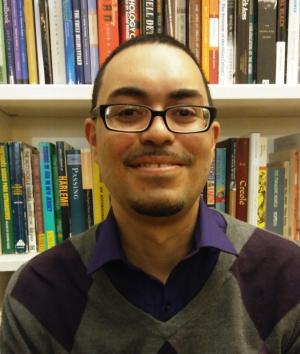
Teaching that prioritizes inclusion and equity is an essential task for instructors. However, teaching remotely due to the Covid-19 pandemic presents unique questions that faculty should address to support their students’ emotional and cognitive well-being. Below, I present six tips to promote an inclusive and equitable remote learning space for this moment. Acknowledge your own and students’ emotions Given the current moment, many students are experiencing stress and trauma. A trauma-informed pedagogy asks instructors to acknowledge and reflect on their own emotions as they prepare to enter this new learning space. Similarly, provide a space for students to process their own emotions as well. This can be done through individual reflection prompts, asynchronous discussion boards, or a guided discussion in a synchronous space. Consider if you can give students agency in the course Since we know students may be experiencing additional burdens and stress, consider ways that you may be able to provide students flexibility in the remainder of the course. A first step is to allow students to help shape the learning environment, including considerations for engagement and their expectations for themselves and others in the course. Additionally, it may be beneficial to give students choice in the types of assignments or tasks remaining in the course. Giving students some agency will allow them to feel some sense of control in a time of great uncertainty. Understand students’ unequal access to technology in determining how to run your course A recent post from PhysPort, a blog about teaching in physics provides considerations for what faculty should consider when thinking about students ability to access the course: Recognize that not all your students will be able to attend synchronous online classes due to internet access, connectivity, scheduling, health, and family situations. Some platforms allow participants to call in via phone, which allow them to hear and participate in audio conversations, but not see slides, screenshare, or video. Find ways for students who can't connect in real time to still participate (e.g. by making recordings available after class), or consider not running synchronous classes at all: asynchronous learning can be much more equitable for students with different levels of access, health and privilege. These are also good things to keep in mind when you are teaching in-person classes. Consider available grading options This may be difficult for some faculty in professional schools and in some undergraduate programs, but I encourage instructors to be open to new ideas for grading. For example, some have suggested that you tell students that they cannot receive a grade lower than what they currently have in the class. Such an approach will help deescalate student stress levels and acknowledge that not all students will have equal opportunities or access to complete the rest of the work for the course. Ensure your materials and technology are accessible As you integrate new ways to engage students and access materials for your course, ensure that these new platforms and methods are accessible. You should consider how students who use assistive technologies can engage the course as well as best ways to students with accommodations. Do what you can to promote your own self-care We recognize that this is a difficult time for you as instructors as well. For some, this new reality may mean balancing professional and personal responsibilities in unique ways. For others, this can heighten feelings of loneliness and isolation. Regardless, of your situation, it is important to do what you need to do to take care of yourself. It is though caring for our own well-being that we can best support our students. These six steps are only a beginning for how to foster inclusion and equity in your remote course. I recognize that this moment presents many challenges. I also recognize that others may have ideas to promote an inclusive and equitable course environment. If you have additional ideas, feel free to leave them in the comments for others to read. Additional Resources “As Human as Possible” by Colleen Flaherty, Inside Higher Ed “Hope Matters” by Mays Imad, Inside Higher Ed “Inclusion, Equity, and Access While Teaching Remotely” from Rice University Center for Teaching Excellence “Maintaining Equity and Inclusion in Virtual Learning Environments” from san Diego State University “Please Do a Bad Job of Putting Your Courses Online” by Rebecca Barrett-Fox
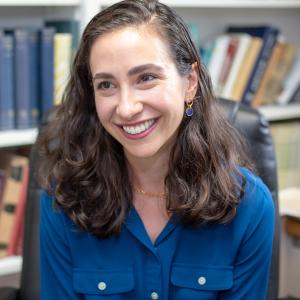
Over the last two months, my partner and I have had many discussions about how Covid-19 has affected our relationship with our students. My partner teaches a generally underserved population of students at a CUNY school in the Bronx, Lehman College, whereas my students are mostly well-off undergraduates and graduate students at a small, religiously-affiliated institution. Nonetheless, the pandemic has taught us similar lessons about how we ought to be thinking about our students, and what they need from us and our institutions—not just during a time of crisis, but all of the time. What follows are the main lessons that I hope to carry forward from this challenging time. None of the insights I’ve had into my students are new to me, and they may not be to you either, but the pandemic has brought their importance home to me much more clearly. Students face mental and physical health challenges. Since we transitioned to online learning, students have let me know that they would have to miss class because of flu, coronavirus, insomnia, and OCD flareups. They have also told me that they may need to stand up and stretch during class, and that they are fine but experiencing stress because of ongoing health concerns that would make the virus more dangerous to them if they caught it. While some of these factors are situational, others are part of the students’ ongoing physical and mental lives, and I wonder if they would feel as comfortable sharing their challenges with me at a time when they had less expectation of support. What can we do under normal circumstances to make clear to students that we do not see them as a (neurotypical) brain in a vat, and that their education can accommodate care for their health? Can we be more thoughtful about language on the syllabus, more empathic in how we treat deadlines and absences? Students find grades stressful. My students took midterms shortly before my school’s transition to Zoom. As I was working on grading them, the school announced that all courses for the semester would be default pass/fail unless the student explicitly requested a letter grade. Realizing that thinking about grades could be an unnecessary additional source of stress, I gave my students three options: they could get feedback with a grade; they could get feedback with no grade; or I could just tell them whether or not they passed. I had takers for all three choices. What would it look like to come up with evaluation and feedback systems that keep students apprised of how they are doing in the course, while accounting for the fact that grades can carry unhelpful emotional weight and even detract from their’ ability to take in feedback? Can we grant students more agency in how and when they receive feedback from us? Students get the most out of active learning. I am teaching two classes this semester. One is a seminar with 18 students, and the other is a course built around hevruta, a Jewish practice of reading and discussing texts aloud in pairs. Of the two, the hevruta course has been vastly more successful over Zoom. The students were already spending more than 50% of in-class time in paired group work, and when they transitioned to doing so online, they remained engaged and active. What would it be like post-pandemic to consider what keeps students engaged during class time, whether it is happening online or not? My institution, like most others, does not yet know what classes will look like in September. As I begin to think about my fall courses, my intention is that my increased awareness of student needs will continue to inform my pedagogy—regardless of whether I will be teaching virtually or in a physical classroom.
The necessity of faith formation through public ministry is underscored now during the rebellions, pandemic and US economic uncertainty. Showcasing a new text: From Lament to Advocacy: Black Religious Education and Public Ministry (2020) for use by faculty, staff, and students. Dr. Nancy Lynne Westfield hosts Dr. Annie Lockhart-Gilroy (Phillips Theological Seminary).